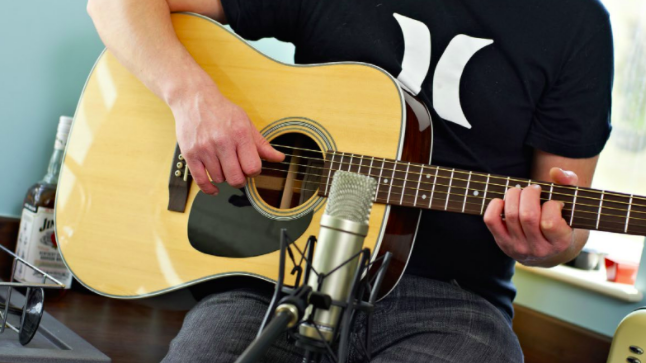Home Recording Hacks
This solid bunch of five pro tips will help you get the most from your gear.

Even if you have only a small amount of gear, chances are you haven’t unlocked its full potential. Have no fear! These pro tips will help you sound better with the equipment you already own – and at little or no additional expense.
1. Recording in the Free World
Recording yourself using software and effects can be expensive, but it doesn’t need to be. There’s a world of great free DAW (digital audio workstation) software and plugins out there for you to download and use to create your own songs.
Many digital audio interfaces and effect units come with free versions of popular software, such as Cubase and Ableton Live. But be sure to also check out various websites like pluginboutique.com and splice.com, where you can download free amp and effect plugins. Meanwhile, Manda Audio’s MT Power Drum Kit (powerdrumkit.com) will give you realistic-sounding drums for your tracks, all for free!

2. Use a Small Amp for Recording
If you live in an apartment, you may regret that you can’t use a stack to create a big, cranked tone for your home recording. The good news is that a small valve amp will work just as well.
Mark Tremonti is a purveyor of big overdriven tone, but even he used a 15-watter for the bulk of his tracks on the last Alter Bridge album. Mic it correctly (see the next tip) and no one will know the difference. Better still, a 1x10 combo trims away the lower frequencies and makes it easier for your guitar to sit alongside the bass track.

3. Mark Your Speaker Grille for Mic Placement
Placing a mic in front of a speaker cab for recording isn’t rocket science or voodoo, but people have their preferences. Some use one mic, while others use several.
Let’s start with the basic winning approach of using a dynamic mic – it’s rugged enough to place close to a speaker, as it can handle the high sound-pressure generated by the amp.
All the latest guitar news, interviews, lessons, reviews, deals and more, direct to your inbox!
Start by facing the mic directly at the center of the speaker (or just one of them, if there’s more than one), and almost touching the grille cloth. With the mic at that distance – and while monitoring the sound through headphones – move the mic from the center of the speaker toward its edge and take note of the changes in tone. Angling the mic up to 45° will also affect the sound.
Experimentation is key here. Most importantly, once you’ve found your ideal spot, mark it on the speaker cloth using a piece of gaffer tape. This will make it easy to get repeat results in the future.

4. Use the USB Output on Your Pedal or Amp as a Recording Interface
You don’t have to buy a dedicated interface to record with your computer. Many new pedals and amps have a USB output that can serve as the main hub for your inputs and outputs. Simply connect your guitar to the pedal or amp, then plug the USB cable into your computer.
Within your recording software’s audio preferences, assign the USB-connected gear as your audio device. You can connect your headphones or speakers to the pedal’s audio output, or use your computer’s built-in speakers or output. Most devices are plug-and-play and won’t require special drivers.

5. Stack Your Tracks the Right Way
Double-tracking your guitar parts can produce bigger sounds, but the devil is in the detail. Rather than simply recording the same part using the identical gear and settings, change things up for each take. Switch to a different pickup type or position, adjust your gain settings or change your amp’s EQ. Using different chord inversions or even a capo on subsequent tracks can really help too. The combined effect of different sounds will make the end result sound fuller.
Pro tip: The Shure SM57 has long been a studio engineer's favorite, offering professional results at unbeatable value
Guitar Player is the world’s most comprehensive, trusted and insightful guitar publication for passionate guitarists and active musicians of all ages. Guitar Player magazine is published 13 times a year in print and digital formats. The magazine was established in 1967 and is the world's oldest guitar magazine. When "Guitar Player Staff" is credited as the author, it's usually because more than one author on the team has created the story.
